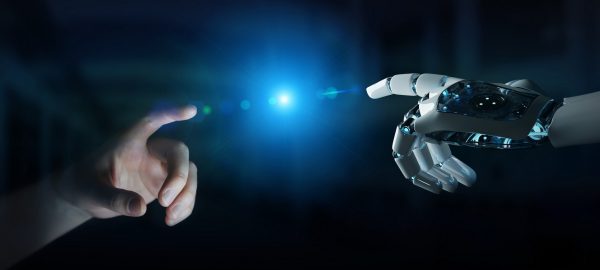
Seminars
Location: Lady Davis Building, Auditorium 250
Ernst Uzhansky, Ph.D.
The deep ocean (200 m or deeper) covers 66% of Earth’s surface, encompasses the largest ecosystem on our planet, provides critical services and resources to humankind, and is the least explored and understood biome on Earth. Due to rapid absorption...
Location: Lady Davis Building, Auditorium 250
Marc Berneman
Processing information is essential to both living and engineered systems. In living systems, this emerges from physical processes such as chemical reactions and electrical signals. Engineered systems, on the other hand, typically rely on central processors to analyze signals and...
Location: Lady Davis Building, Auditorium 250
Zvi Chapnik
Robots are a key part of our future; they will need to be able to move and work in various environments and with changing interactions with objects and environment. A big part of today’s research focuses on different aspects of...
Location: Lady Davis Building, Auditorium 250
Sahar Rosenberg, Ph.D.
Nonlinear dynamics is crucial in understanding the complex behavior of systems across various engineering fields. Unlike linear systems, which exhibit predictable and proportional responses, nonlinear systems can display unexpected and complex behaviors. This complexity is often found in natural and...
Location: Lady Davis Building, Auditorium 250
Nadav Friedman
Low enthalpy hypersonic wind tunnel testing is limited by a mismatch between the specified Mach number and the Reynolds number of the full-scale (target) vehicle. This is due to both the difference in physical dimensions and the universal reliance on...
Location: Lady Davis Building, Auditorium 250
Tomer Sela
Robotic assistance is now common in minimally invasive surgery, but progressing from teleoperation to reliable autonomy requires controllers that adapt to soft-tissue mechanics. We address a core subtask of autonomous suturing: precision needle driving through deformable tissue; where the robot...
Location: Lady Davis Building, Auditorium 250
Raj Gandhi
Surface tension-driven phenomena are ubiquitous in nature and in many industrial applications. As with technological advancement, the transport process often involves complex fluids, such as colloidal dispersions or nanofluids, polymer liquids, and two-phase systems. Nanofluids represent colloidal dispersions made of...
Location: Lady Davis Building, Auditorium 250
Erez Hochman
I will present a new fabrication method that uses surface tension and boundary elements to drive a volume of liquid polymer into a desired structural element in a simulated zero-gravity environment. This method creates rigid elements with extremely smooth surfaces,...
Location: Lady Davis Building, Auditorium 250
Jonathan Ericson
Future long-duration space missions will require in-situ, on-demand manufacturing of tools and components. Photopolymer-based processes are attractive for this purpose due to their low energy requirements and volume efficiency. However, photopolymerization generates significant heat, which is difficult to dissipate in...
Location: Lady Davis Building, Auditorium 250
Yameng Bing
The progression of war is filled with surprises, misjudgments, and complex interactions. This deep uncertainty makes it difficult for traditional predictive models to capture the true dynamics of warfare, often rendering predictions highly unreliable and posing a critical challenge to...
Are you interested in learning the profession of the future?
Faculty of Mechanical Engineering, Technion - Israel Institute of Technology, Haifa
"*" indicates required fields





